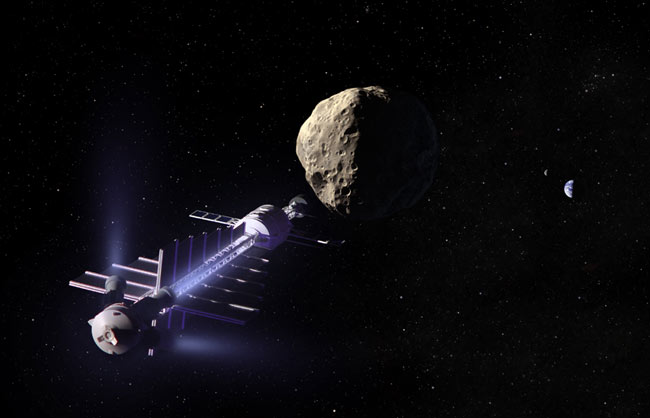Scientists Learn How to Deal with Rogue Asteroid Threats

When itcomes to 22-million-ton asteroids, the small stuff, it turns out, can make ahuge difference in a potentially disastrous path toward Earth.
Usinglimited observations and lots of high-end computer modeling, astronomers havegotten a better handle on the limitations of asteroid-track forecasting in anew study of a potentially threatening asteroid calledApophis. In this high-stakes game of Whack-a-Cosmic-Mole, just knowingexactly what it is you don't know can be useful.
Apophis'chance of hittingour planet in 2029 is now slim to none, but astronomers will have to waitfour to six years before they can predict what it might do during a second passin 2036. A team of scientists arrived at the conclusion after accounting forsmall influences like the solar wind, gravitational drag of smaller asteroidsand human error.
The rock isbetween 690 and 1080 feet (210 and 330 meters) wide. Until better measurementslower the uncertainties, its predicted path could be severely off, potentiallythwarting proactive efforts to change its course.
Uncertainfuture
In 2004,astronomers gave Apophis a frightening one-in-37 chance of strikingthe Earth in 2029, which later measurements from Puerto Rico's giantArecibo radio observatory knocked down to a one in 45,000 likelihood.
Apophis isexpected to make a comfortably distant encounter of about 30 million miles (47.9 millionkilometers) with Earth in 2036. But its first path-bending pass in 2029—aboutthree Earth diameters of our home—and other unknowns could greatly alter theasteroid's second approach seven years later.
Breaking space news, the latest updates on rocket launches, skywatching events and more!
In theirstudy, to be detailed in an upcoming edition of the journal Icarus,astronomers examined hundreds of potential courses with computer simulations,then hashed out course-altering uncertainties after the first encounter. The largestsuch source of error is the sun's ability to push small asteroids around withsolar radiation; in Apophis' case, up to 18.6 million miles (30 millionkilometers) or about 2,350 Earth diameters off-course.
Othersources of course prediction error include:
- Small uncertainties in planetary masses and position, up to 11.5 Earth diameters of error.
- Earth's imperfect spherical shape, up to 1.5 Earth diameters of error.
- Gravitational influence of small asteroids, up to 1.7 Earth diameters of error.
Astronomerssaid looking at the rock via telescope is necessary to cut out most of theerror, but won't be possible until 2011 or 2013, when Apophis comes out ofhiding from behind the sun. Noting the shape, colors and rotation, not justcurrent position, should cut out up to 97 percent of the uncertainty about theasteroid's future track.
A littlegoes a long way
Until then,scientists are dreaming up of cost-effective ways to redirect Apophis before2029, should the need arise.
One recently proposedsolution calls for strapping on a small reflective patch to the rogue body. Byadding a 130-by-130 foot (40-by-40 meter) section of material that acts like asolar sail, Apophis could be pushed away by at least one Earth radius, or about4,000 miles (6,400 kilometers)—more than enough to avoid cataclysm.
The reflective material doesn't have to be stuck in one place, either. Spreading a shiny mesh of carbon fibers over Apophis might nudge it away from Earth's path for good.
But a lackof good observations, astronomers warn, could turn such proactive deflectionsinto disaster.
"Withoutsuch performance margin," the authors said, "the deflection actionwould instead create an unpredicted outcome or a new hazard."
- Catastrophe Calculator: Estimate Asteroid Impact Effects Online
- VIDEO: Killer Asteroids and Comets
- IMAGES: Asteroid Gallery
Dave Mosher is currently a public relations executive at AST SpaceMobile, which aims to bring mobile broadband internet access to the half of humanity that currently lacks it. Before joining AST SpaceMobile, he was a senior correspondent at Insider and the online director at Popular Science. He has written for several news outlets in addition to Live Science and Space.com, including: Wired.com, National Geographic News, Scientific American, Simons Foundation and Discover Magazine.
